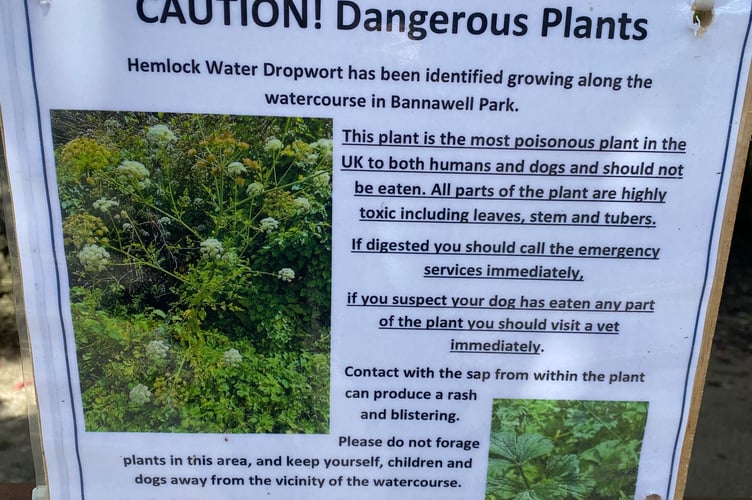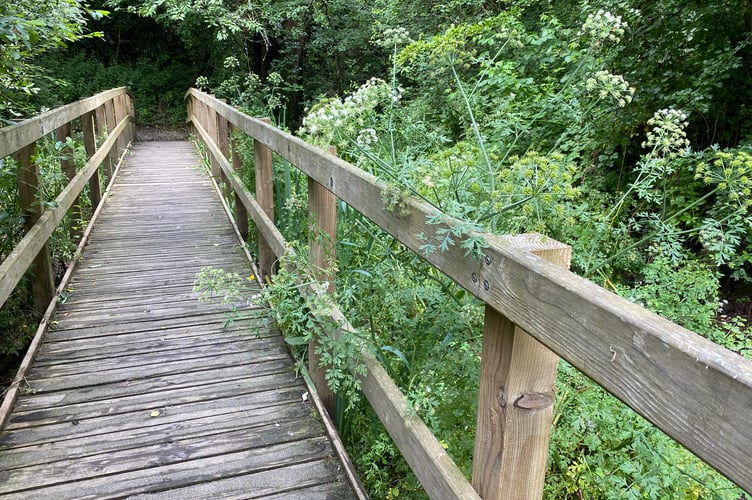A warning has been issued to users of a Tavistock park about a deadly plant which is thriving in its waterways.
Hemlock Water Dropwort – commonly known as Hemlock – is one of the most poisonous plants in the UK.
It is currently flowering in Bannawell Park where notices have gone up warning people that the plant should not be eaten by people or dogs. Even touching it could cause a rash or blisters, so toxic is the sap.
People are being urged to avoid foraging in the park. as with its frond-like foliage, hemlock can be mistaken for wild carrot, wild parsnip and wild parsley.
There have been cases of people foraging for what they think are edible plants and becoming seriously ill after mistakenly eating hemlock – causing severe vomiting, seizures, hallucinations and even death.
The notice states: “This plant is the most poisonous plant in the UK to both humans and dogs and should not be eaten. All parts of the plant are highly toxic including leaves, stem and tubers. If digested you should call the emergency services immediately. If you suspect your dog has eaten any part of the plant you should visit a vet immediately.”
The signs have been put up by Tavistock Town Council, which owns and runs the park, alongside paths and bridges approaching the small natural woodland through which a stream flows.
There are particular concerns as the park includes a play park which has been refitted with brand new play equipment, so children are likely to play alongside the stream.
Hemlock is native to the UK and normally found in shallow water, streams, rivers and lakes. It puts on a growth spurt in warm wet weather and flowers in high summer.
The town council in Tavistock is now deciding what to do about the hemlock.
In a report to the council’s budget and policy committee, its works manager says a report has been commissioned from a specialist contractor on how to remove the plant safely.
This could be by either chemical or mechanical means, although both would be expensive and could disturb wildlife, including nesting birds. during the summer.
The third option, to leave it untouched. However the report cautions the council that this could cause a “negative public perception” and likely criticism around the ‘potential poisoning’ of children and in particular dogs.
The report adds: “The council could also be accused of negligence by allowing the plant to seed and spread.”
There is no legal requirement on the town council to control the hemlock or to prevent further spread an it is not on any list on non-native invasive species. However, the fact that it is poisonous is a concern.
The council acted swiftly once the hemlock was identified by an ecologist in June, erecting the signs and putting warnings on social media.
Last year the plant root of hemlock, or tuber, was washed up on the Cornish coast, sparking an alert to dog owners because their pets have died after eating them.






